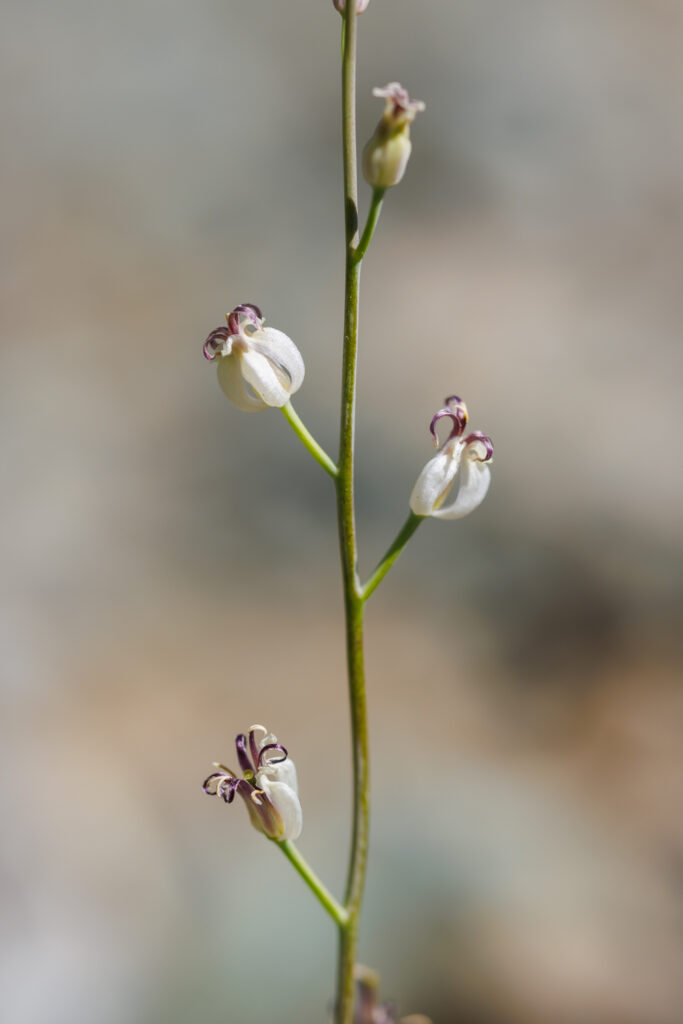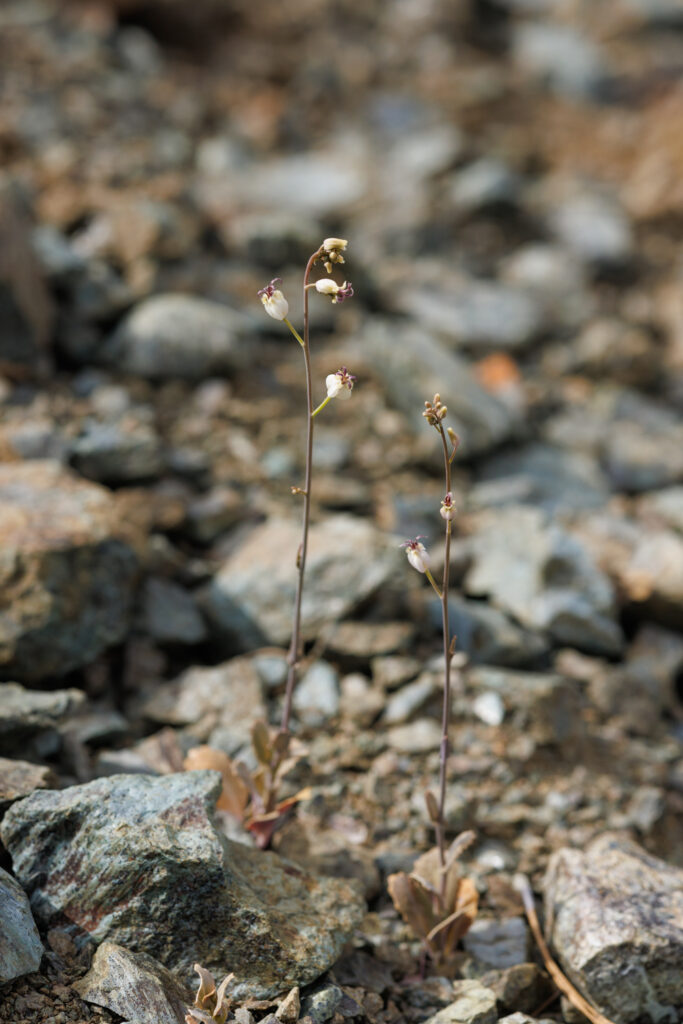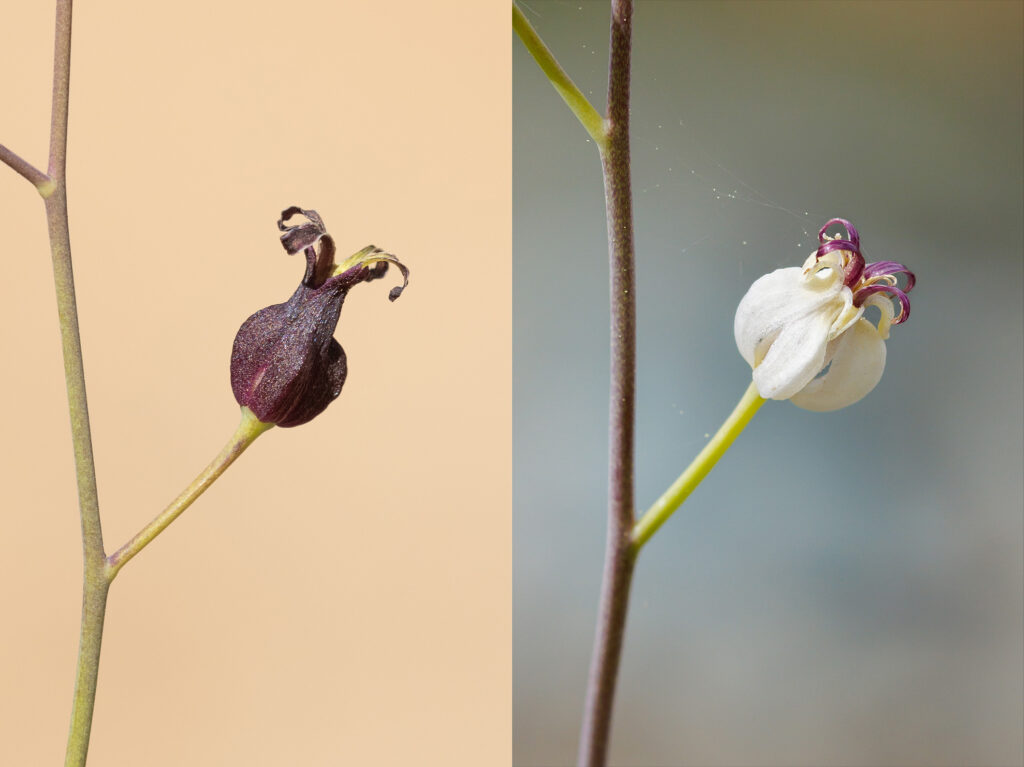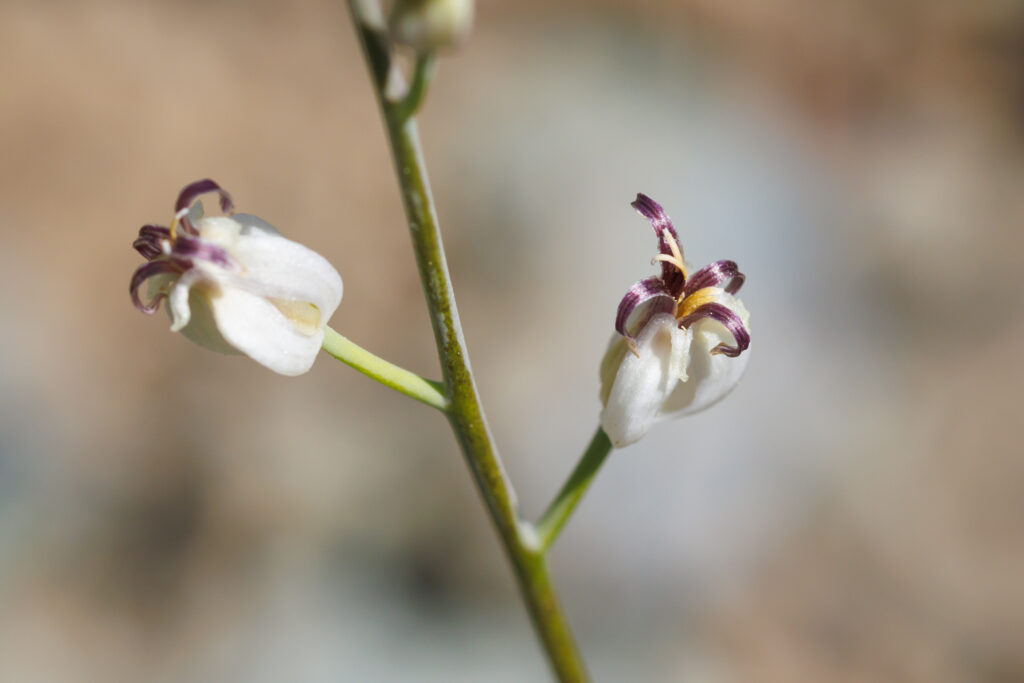Caulanthus amplexicaulis var. barbarae

- Sensitive – U.S. Forest Service
- Rare Plant Rank 1B.1 – California Native Plant Society
The Santa Barbara jewelflower is found only in the San Rafael Mountains in Santa Barbara County, in and near the Los Padres National Forest. It is endemic to our backcountry (found nowhere else in the world) and there are only a handful of known occurrences of the species, from Cachuma Saddle to Zaca Peak in the Los Padres National Forest, on the Sedgwick Reserve, and Midland School property southwest of Figueroa Mountain.
The Santa Barbara jewelflower’s blossom consists of yellow-cream pouched and clasped sepals and long, purple petals extending above the sepals. The flowers are small, not exceeding an inch. The plant can range from 4 inches to almost 2 feet tall depending on weather and site conditions, and is vertical and slender. The Santa Barbara jewelflower is an annual herb, meaning that each individual only lives for one year’s growing season (blooms from May to July), establishing seeds in the ground during its life cycle for the next generation. Its “skeletons” (remnants of a previous generation plant) are often found where the plant once grew. Little is known about the necessary conditions for seed germination.

The Santa Barbara jewelflower is restricted to an archipelago of crumbly serpentine soil on the slopes of the San Rafael Mountains. This is a rare adaptation, as most plants cannot grow in serpentine soil due to its lack of many essential plant nutrients (phosphorous, calcium, nitrogen) and high metal content (iron, nickel, chromium). Serpentine soil can be distinguished on a landscape by an abrupt reduction in vegetation levels. The Santa Barbara jewelflower is one of the few plants in the San Rafael Mountains that can grow in such conditions, and it can be found in serpentine talus slopes were virtually no other plant species is growing. Other growth sites are usually in sloped crevices or disturbed banks, often in gaps in chaparral or near Sargent cypress forest and gray pine woodland.
There are a few local relatives to the Santa Barbara jewelflower. Technically this plant is a unique variety of the claspingleaf jewelflower (Caulanthus amplexicaulis). The Santa Barbara jewelflower differs from other claspingleaf jewelflowers by having white or cream-colored sepals (the leafy-part of the flower that protrudes just underneath the petals) and its affinity for serpentine soils. The Santa Barbara jewelflower is also closely related to the California jewelflower (Caulanthus californicus) but is likewise distinguished by its serpentine adaptation and extreme endemism. In fact, the Santa Barbara jewelflower is the only species within the Caulanthus genus that is entirely restricted to serpentine and therefore has special consideration for conservation.

Threats
Threats to the Santa Barbara jewelflower include trampling as a result of fire suppression activities, road maintenance, or recreational activities. For example, occurrences in the White Rock area may be impacted by off-trail activities. The Forest Service considers the Santa Barbara jewelflower a sensitive species, as current habitat conditions are stable but vulnerable to the aforementioned human disturbances.
The California Native Plant Society (CNPS) classifies the jewelflower as “seriously threatened” due to its narrow endemism to the San Rafael Mountains and its low number of known occurrences. According to CNPS, the jewelflower is threatened by road construction and maintenance, fire suppression activities, non-native plants, vehicles, mining, and livestock grazing. It is also possibly threatened by foot traffic and recreational activities, according to CNPS.
Our Efforts
ForestWatch is working to protect Santa Barbara jewelflowers and its unique serpentine habitat. Because the flower is so rare, it’s important to protect all remaining occurrences. Several jewelflower occurrences are found on the Happy Canyon grazing allotment between Figueroa Mountain and Ranger Peak. ForestWatch is working to ensure that these plants are protected from livestock trampling, road maintenance, and off-road vehicle use and that all possible impacts to this unique flower are fully considered and avoided to the fullest extent possible.
We’re also encouraging the Forest Service to conduct additional surveys so that botanists can gain a better understanding of this flower and its unique habitat.







